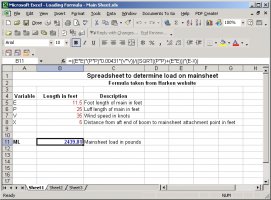I thought I would also at the same time, go from 4:1 to 6:1 on the mainsheet itself. The current 4:1 system is a little worn looking, and I would also like to make it easier for my wife to sheet in the main when I am at the helm. I could just upgrade to a 4:1 system with all ball bearings, but I thought why not go to 6:1 at the same time; it's just a little more line in the cockpit.
My question is: what is a good estimate of the working load on the mainsheet? (the sheet is not quite end-boom; more like 3/4 boom)
The Harken Midrange system has a safe working load of over 4000 pounds, but is horribly expensive (list > $500) relative to the other systems on the market.
My friend just put series 60 Garhauer blocks on his end-boom sheet for a Hylas 44; the 60 series has a SWL of 3500. I would have to think that my smaller boat, even with 3/4 boom sheeting, could get by with the series 50 (SWL 3000), or even the 40 (SWL 2800). The Garhauer blocks are all similar in price, about half the Harken. So the issue is partly one of size; I think the 40 series would not look so massive on my boat.
I would love it if someone actually could tell me the approximate load on my sheet, or has real world experience to share.

 Geoff:
Geoff: